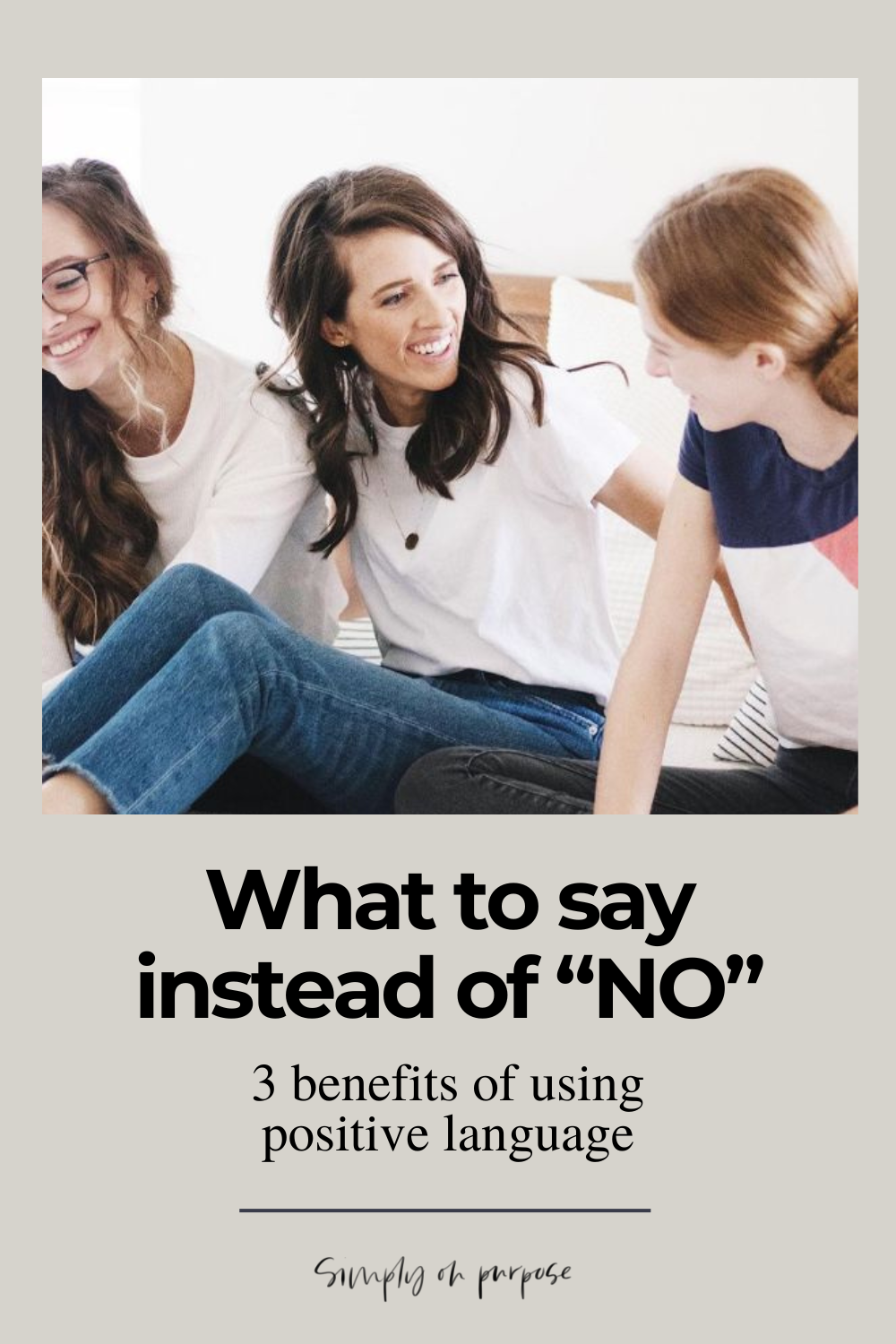Your words matter. Here’s how using positive language with your child builds their skills, confidence, and relationship with you.

Negative Language is Powerless
One of the hardest cycles to break is using negative language with children.
We have two goals when we use negative language like “No. Stop! Knock it off,” with our kids:
- to stop a behavior
- to blow off steam.
And in the moment of the kids jumping on the couch or pulling the dog’s tail, it seems to work.
The behavior might stop, but if it does it simply creates a behavior void. And what gets filled into that void… is usually more behavior that you don’t like.
Though we all fall into this natural pattern often, it’s wise to understand that negative language is a terrible teacher. It reinforces behavior that you don’t like (by giving it a lot of attention) and creates momentum for more misbehavior.
The reality is that negative language is POWERLESS because it fails to teach the child what they should do.
Benefits of Positive Language
Using positive language is a very powerful parenting tool.
Below I will walk you through 3 reasons parents should use positive language and where they could use a positive script to build skills, confidence, and relationships.
Remember, a parent’s role is to create positive momentum. When we use positive language, it moves behavior forward in the right direction.
1. Positive Language Builds Skills
“STOP!” tells a child nothing.
The child is left to try to figure out what he/she should be doing. Parents are asking a child to do two big jobs.
First, you are asking the child to figure out how to stop. Second, you are asking them to find out what they should do instead. For littles, that’s asking too much.
Positive language skips all those steps. You give helpful instructive information so the child can more easily move past the negative behavior.
Example
You have a child splashing in the bathtub. The waves are huge and the floor is wet and slippery.
A false goal would be to get the behavior to immediately stop: “Stop splashing!”
But your true goal should be to teach a skill that can be used in the future: “Water needs to stay in the bathtub. Can you fill this cup up with water?”
When we use positive language to teach and redirect, we help a child know what behavior is expected. Here is a video of negative vs. positive language in action.
2. Positive Language Builds Confidence
Your words have the power to help or hinder.
They have the power to expand goodness or place a restrictive label. They have the power to over-generalize or assume the best.
I’m sure if I asked, you could remember a specific negative label a parent or teacher had given you in your childhood. And how does it still impact your life?
As parents, we need to be very conscious of the words and labels we give our children because they often stick- for good or bad.
Instead, we want our children to be motivated by the good we see in them.
Example
You have a child who comes home from school leaving a trail of school papers, dirty socks, and general chaos behind them.
A false goal would be to define the child: “You are so messy! Can’t you remember where your things go?”
But your true goal should be to build self-esteem: “Wow! You remembered to wash your hands when you came in the door. You are so responsible.”
Positive language helps our children see themselves in a positive light. And when we focus on the good, the good gets better. Watch this video to watch how positive language can build confidence and self-esteem.
3. Positive Language Builds Relationships
Positive language invites positivity into our relationship with our child.
The same goes for negative language. It invites negativity.
When we use positive, cooperative language like “Let’s. We. Us.” it invites our children into our world and lets them know they don’t have to do things alone.
So use positive language. It’s a more cooperative/teamwork feel in your home.
Example
You have a teen that is frustrated with having to do the dishes after dinner and is making it very loudly known.
A false goal would be to control the situation and your child: “Stop arguing with me! You just have to do the dishes because I said so.”
But your true goal should be to work as a team and build your relationship: “Thank you for sharing how you feel. You have a point. Now it’s my turn to share.”
When we use positive language, it shows respect to our children and that we value their thoughts and opinions.
Positive Language Resource
I’ve created a printable resource for you, which gives more examples and positive scripts you can use with your children. Using these scripts might feel awkward initially, but life will give you plenty of opportunities to practice.
You know your child best and you know what positive language would be best to teach and build their self-esteem.
If you want to learn more about your power as a parent, you might also like these other resources.


Comments are closed.